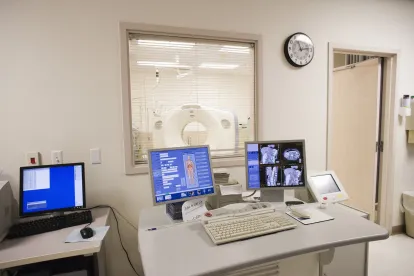The FTC just suffered a major setback in its concerted efforts to challenge the ever growing number of consolidations in the healthcare industry, failing to secure a preliminary injunction to block a hospital merger in central Pennsylvania. In a decisive and strongly-worded opinion, the Honorable John Jones III of the Middle District of Pennsylvania concluded that (1) the FTC had fatally alleged an unrealistically narrow geographic market; and (2) the merger was likely to benefit (not harm) consumers, in part by allowing the merged entity to remain competitive in the new healthcare environment which “virtually compels” consolidations. Federal Trade Commission et al. v. Penn State Hershey Med. Ctr. et al., Case No. 1:15-cv-02362 (May 9, 2016, M.D. Penn).
In December 2015, the FTC (together with the Pennsylvania Attorney General) brought an administrative challenge to block the merger of Penn State Hershey Medical Center and PinnacleHealth System. According to the FTC, the merged entity would control more than 64% of general acute care (GAC) services sold to commercial payors in the Harrisburg, Pennsylvania area, leading to increased costs and reduced quality for more than 500,000 residents.
Relevant Geographic Market
In its motion for a preliminary injunction, the FTC alleged that as a general matter, geographic markets for GAC services are inherently local because patients want to be hospitalized near their homes. As such, the relevant market here is comprised of a four-county area in and around Harrisburg (the Harrisburg Area), the area within which its residents stayed for GAC services.
After a five-day evidentiary hearing on the matter, the court flatly rejected the FTC’s geographic market. Instead, it found significant the undisputed figures that, in 2014, nearly 44% of Penn State’s patients and several thousand of Pinnacle’s patients lived outside the Harrisburg Area. A significant percentage of Penn State’s patients traveled at least thirty minutes to over an hour for care, with Penn State earning more than half of its revenues from patients outside the Harrisburg Area. In addition, 19 other hospitals within a 65-minute drive of Harrisburg provided consumers with realistic alternatives.
The court also found “extremely compelling” the affirmative steps Penn State and Pinnacle had already taken to ensure that post-merger rates did not increase. The hospitals had executed 5 and 10-year agreement with the two largest commercial payors in the area which accounted for 75-80% of both hospitals’ commercial patients. The agreements not only required the hospitals to continue contracting with these payors, but to maintain existing rate structures for fee-for-service contracts and preserve the existing rate-differential between the two hospitals. As a result, the court concluded, rates cannot increase for at least five years, and it would be imprudent to otherwise block the merger based on predictions of what may happen with respect to negotiating positions and rates in five years, particularly within the rapidly-evolving healthcare industry.
New Life for Efficiencies?
In the wake of the Ninth Circuit’s skeptical treatment of efficiencies in St. Alphonsus Medical Center v. St. Luke’s Health System, 778 F.3d 775 (9th Cir. Feb. 10, 2015), many in the antitrust bar have been speculating about the continued viability of an efficiencies defense, particularly in the healthcare context. In a seeming counterpoint to St. Luke’s, the district court here – after already having concluded that the preliminary injunction must be denied because of the FTC’s failure on the relevant market – considered the hospitals’ evidence of procompetitive efficiencies in the context of a weighing of the equities to determine whether an injunction would be in the public’s best interest. In finding that the merger would in fact lead to significant efficiencies, further weighing against the grant of a preliminary injunction, the district court’s opinion may have breathed new life into the efficiencies defense after St. Luke’s.
First, the hospitals had presented a compelling efficiency-enhancing justification for the merger in that the merger would directly alleviate Penn State’s significant capacity constraints to the benefit of patients. And not only would the merger allow Penn State to instantaneously increase its capacity, but it would also allow it to transfer lower-acuity patients to Pinnacle, thereby freeing up Penn State’s highly-advanced facilities to admit more high-acuity patients who would benefit from its greater offering of complex treatments and procedures, thereby allowing more patients to be treated at the facility best suited to their healthcare needs.
Second, the relevant market here had already been subject to extensive repositioning by the hospitals’ competitors which would serve as a meaningful constraint against the merged entity’s ability to control the market. The court further concluded that “[r]ather than monopolizing a geographic space, merging allows [Penn State] and Pinnacle to remain competitive in a climate where nearby hospitals are routinely partnering to assist each other in achieving growth and dominance.”
Third, the court noted the recent and significant shift towards risk-based contracting (where the provider assumes the risk for the cost of case for the patient) and credited the hospitals’ position that a merger would allow the hospitals to spread the risk across a larger health care system.
Finally, the court explicitly recognized “a growing need for all those involved to adapt to an evolving landscape of healthcare that includes, among other changes, the institution of the Affordable Care Act, fluctuations in Medicare and Medicaid reimbursement, and the adoption of risk-based contracting.” In an unmistakable shot across the bow, the court concluded its opinion by observing:
We find it no small irony that the same federal government under which the FTC operates has created a climate that virtually compels institutions to seek alliances such as the Hospitals intend here. Like the corner store, the community medical center is a charming but increasingly antiquated concept. It is better for the people they treat that such hospitals unite and survive rather than remain divided and wither.
The court’s observation is particularly noteworthy given the FTC’s oft-repeated stance that the Affordable Care Act neither requires nor encourages healthcare consolidations, nor alters preexisting application of the federal antitrust laws. The FTC’s position notwithstanding, at least one court has now stated in no uncertain terms that at least economically, if not legally, there is in fact real tension between antitrust enforcement and the Affordable Care Act.
Interested parties will have to stay tuned to see how this hospital merger challenge plays out. The FTC immediately appealed the district court’s decision to the Third Circuit, also filing an emergency motion to grant an injunction pending appeal and to expedite the appeal. An evidentiary hearing on the administrative action is also currently scheduled with the FTC Commission for June 1, 2016.




 />i
/>i

